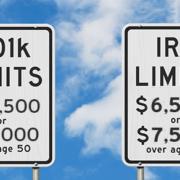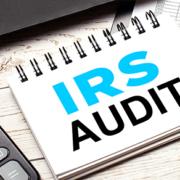Recent reports have raised anew concerns about the impending insolvency of the Social Security program, absent congressional action. Social Security reform has long been considered a “third rail” of American politics and understandably so — the options for heading off insolvency will inevitably cause pain for significant segments of the population. Yet some in Congress have stepped forward with proposals that aim to tackle the problem.
The impending shortfall
Social Security currently provides benefits to more than 66 million recipients. The Congressional Budget Office (CBO) estimates that about 78 million people, or about 20% of the U.S. population, will receive benefits from the Old-Age and Survivors Insurance (OASI) Trust Fund in 2032.
The CBO and the trustees of the Social Security and Medicare trusts have both raised alarms about how soon Social Security will become “insolvent.” Insolvency in this context refers to the point at which the trust fund will be depleted, and payments would come solely from income generated by payroll tax and income tax on benefits.
The 2023 Trustees Report states that the OASI Trust Fund will be able to pay 100% of total scheduled benefits only until 2033, one year earlier than the trustees projected last year. The program would then be able to pay 77% of scheduled benefits.
The CBO’s forecast is even more dire. It predicts the OASI fund will be exhausted in 2032. As a result, it says, payable benefits would be 25% less than scheduled benefits.
The declining ratio of workers to beneficiaries is one reason for the trust fund’s shrinkage, and the retirement of Baby Boomers has only accelerated this trend. High interest rates and historic inflation also play a large role. Due to inflation, beneficiaries saw an 8.7% cost-of-living adjustment (COLA) in 2023, the largest such hike since 1981.
According to the Congressional Research Service, the trust fund’s depletion, whenever it occurs, would create a conflict between two federal laws. Beneficiaries would remain entitled to their full scheduled benefits under the Social Security Act. But the Antideficiency Act prohibits government spending in excess of available funds, so the Social Security Administration (SSA) would lack legal authority to pay full benefits on time.
Limited options
Congress has a limited arsenal of weapons for addressing the shortfall in the OASI fund. It generally can increase trust fund revenues or reduce benefits by taking various steps, such as:
Raising the retirement age. Retirees normally begin receiving benefits at age 66 or 67, depending on their year of birth (reduced early benefits are available at age 62). Various legislators and others have called for increasing the full retirement age. For example, some have suggested raising it to age 70 for people born in 1978 or later.
The American Academy of Actuaries (AAA) points out several potential problems with this approach, though. For example, raising the retirement age is essentially a cut in benefits, and jobs might not be available for people ages 67 to 69 who would have to keep working, particularly those who perform manual labor. A higher retirement age would disproportionately affect low-wage workers and those who have higher mortality rates. In addition, it would likely increase disability insurance costs and the costs for employer-provided insurance.
Increasing payroll tax. Workers and employers each pay 6.2% payroll taxes, for a total of 12.4% on the first $160,200 of wages in 2023. Payroll taxes could be boosted in two ways — increasing the tax rate and adjusting or eliminating the wage cap.
The AAA says that, of all the many proposals and bills for addressing the impending deficit, “raising the tax rate best preserves the current system structure.” The CBO says that trust fund balances would be sufficient to pay scheduled benefits through 2097 if the total payroll tax rate was increased immediately and permanently to 17.6% (before accounting for the effects of such changes on the economy).
Others have proposed applying the tax to greater amounts of wages. Some would apply the tax to earnings greater than a specific threshold (for example, $400,000), creating a “doughnut hole” of income not subject to the tax.
The AAA explains that, if the contribution base is increased but not the benefit base, the fund could raise revenue with no increase in benefits. The effect would be similar to increasing the tax rate, but the additional tax revenue would come only from workers with earnings in excess of the benefit base. In other words, this would negatively affect higher earners.
But the AAA says that even including the additional taxed earnings in the benefit formula would help. That’s because the additional earnings in the benefit formula would be at the high end of the earnings scale, where the benefit formula percentage is lowest. Moreover, while the additional tax revenue would begin immediately, the additional benefits would slowly phase in over time.
Changing benefits formulas. COLAs currently are based on changes to the Consumer Price Index for Urban Wage Earners and Clerical Workers. A different inflation index could be used to slow the annual increases. This would produce net benefit reductions as smaller benefit increases in early retirement years compound over time.
Other ideas include changing the primary formula for benefits for retirees or those for eligible spouses and dependents. For example, the basic Social Security benefit is called the primary insurance amount, based on average indexed monthly earnings (AIME) — generally, the average of a beneficiary’s highest earning years over a period of up to 35 years.
The number of averaging years included when calculating AIME could be increased, which would reduce the AIME for most workers. However, the AAA says this could have “especially adverse consequences” for workers who don’t have steady earnings, such as parents who leave the workforce to care for children.
Implementing means testing. Means testing generally refers to reducing or eliminating Social Security benefits for wealthy and/or high-income retirees whose current income or assets exceed a certain threshold. Supporters of means testing argue that the program shouldn’t benefit those who don’t have financial need.
Opponents contend that cutting or eliminating benefits for the wealthy would be unfair, as those individuals have contributed and been promised benefits just as others have. They also warn that it could undermine public support for Social Security, disincentivize work in later years and encourage consumption over saving.
Some recent proposals
Despite its third-rail status, several legislators on both sides of the aisle are working to confront the Social Security solvency crisis. For example, in February 2023, Sens. Bernie Sanders (I-VT) and Elizabeth Warren (D-MA), along with several Democratic colleagues, introduced the Social Security Expansion Act.
Among other things, it would apply the payroll tax to earnings above $250,000, without crediting the additional taxed earnings for benefit purposes. It also would impose a 12.4% tax on investment income and change the inflation index for COLAs. The SSA’s Office of the Chief Actuary estimates that enactment of the bill would extend the ability of the combined OASI and Disability Insurance program to pay scheduled benefits in full and on time for 75 years. In addition, the bill would add $2,400 to beneficiaries’ annual benefits.
Sens. Angus King (I-ME) and Bill Cassidy (R-LA) are heading a bipartisan coalition exploring other options. They’re reportedly discussing the creation of a so-called “sovereign wealth fund” separate from Social Security. The fund would invest $1.5 trillion or more in the U.S. economy and accrue returns over 70 years. If it fails to produce an 8% return, the maximum taxable income and the payroll tax rate would be increased to ensure solvency for 75 years. Cassidy says this approach would “solve 75% of the problem.”
A political conundrum
Both parties acknowledge the need for some type of action regarding Social Security. Generally, Democrats oppose cuts to benefits and Republicans oppose higher taxes. And the political climate isn’t favorable for reaching a compromise. We’ll follow the developments and keep you informed of any significant changes coming your way.
© 2023












